Not counting Captain Marvel, Jr., the second super hero to go by the name Captain Marvel clearly did so in a purposeful and satirical manner. It would be interesting at some point to take a look at the many artificial life-forms populating the comic book page, robots, androids, synthoids, super computers, living statuary, etc., etc. It's a very common element in all science fiction of course. Human Torch creator Carl Burgos seemed particularly interested in telling these modern Golem/Frankenstein stories. At the same time he was working on Timely's Torch, he also created the highly obscure robot hero Iron Skull for Centaur Publications (who also presented a portion of the Dr. Occult story under the name of Dr. Mystic). Iron Skull was bullet-proof, and at times acted as a living torpedo.
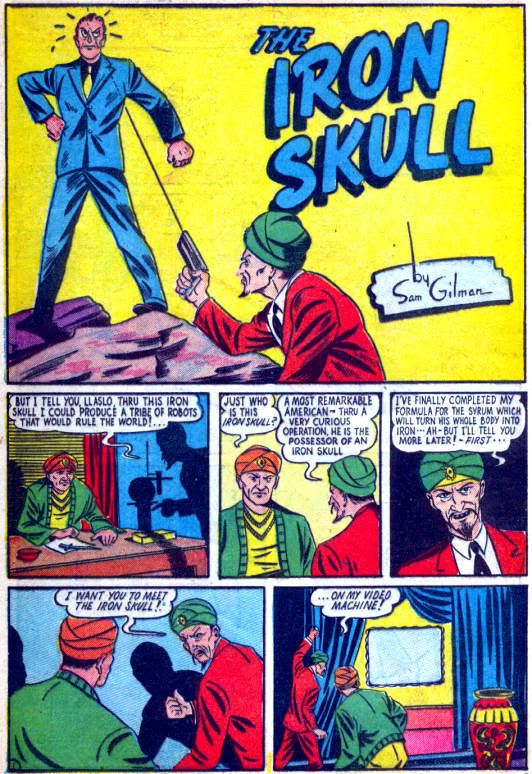
The Iron Skull is the big-eyed, blue-suited fellow in the top panel. Art by Sam Gilman.
Burgos had a long career in the industry and worked for many publishers. In 1966 he presented yet another android hero, this time for publisher M.F.Enterprises. This was a campy, purposeful play off already established characters. Burgos' Captain Marvel had a ward named Billy Baxton (the alter-ego of the Shazam Captain Marvel was Billy Batson) and enemies with familiar, or near-familiar names like Plastic Man/Elastic Man, Dr. Fate and the Bat. As a kind of odd reversal of the Shazam Captain Marvel abilities, I suppose a sort of super hero addition, the Burgos Captain Marvel's power was the ability to separate his body parts at any joint while keeping them mobile and under his mental control. In a play off the magic word "Shazam!", this Marvel must say "Split!" for his power to engage and "Xam!" to get them to rejoin. "Split-Xam" = "Sha-Zam". No one ever said comics weren't cheesy, especially in the 60s. For more on this Marvel read "The Split/Xam Captain Marvel" by Robby Reed at Dial B for Blog.
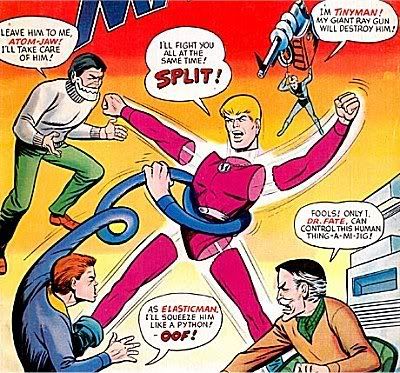
Art by Carl Burgos
One of the markets where the adventures of the Fawcett Marvel Family were very popular was the UK. When publication by Fawcett ceased in the early 50s, British publisher L. Miller & Son hired illustrator Mick Anglo to essentially recreate the character. This new UK version was named Marvelman.
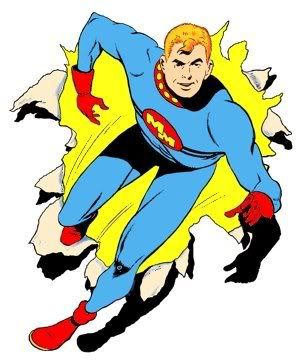
art by Mick Anglo
Amongst the key differences between the Shazam Captain Marvel and Marvelman was the source of their transformative abilities. Marvelman acquired his abilities from an astrophysicist using atomic energy rather than by a wizard using magic. Marvelman's transformative word was "Kimota!" (Atomic phonetically backwards). Captain Marvel Jr. was redesigned as Young Marvelman, while the female Mary Marvel was replaced with the male Kid Marvelman.
Marvelman adventures ran in the UK until 1963. Marvelman returned in 1982 in the pages of Quality Comics' "Warrior Magazine". Revamped for the modern era by visionary comics writer Alan Moore ("Warrior" also served as the original venue for "V For Vendetta" ) and illustrators Garry Leach and Alan Davis. Moore and Davis had worked together previously on the Marvel UK adventures of Captain Britain, whom we will return to later in this article.
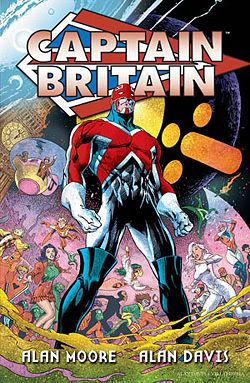
Art by Alan Davis
As those familiar with Moore's brand of comic book material could guess, his take on Marvelman was dark, grounded in hard realities and steeped in esoteric symbolism. Marvelman comes to learn that he and his two allies are the product of Cold War genetic engineering made possible by a crashed alien spacecraft in the possession of the British government, a project codenamed Zarathustra. Marvelman further comes to realize that the entirety of his earlier superhero career was a virtual reality "Matrix"-like experience, the adventures and villains fed into his brain by the Zarathustra Project.
"Warrior" ceased publishing Marvelman adventures in 1984, in part due to legal pressure from Marvel Comic who felt the character's name infringed upon their trademark. This led to the character being licensed to the American comic publisher Eclipse Comics, who reprinted the Warrior material and all-new material by Moore and artists Rick Veitch and John Totleben under the name of Miracleman to avoid further dispute with Marvel. Later adventures of Miracleman were written by Neil Gaiman.
Warrior and Eclipse's difficulty in using the term "Marvel" in a title was felt earlier by DC Comics. DC was likewise highly restricted in their ability to publish material under the name "Captain Marvel". Marvel Comics naturally had their own long history with the term. While comics continued to be published in the 50s, the super hero genre was no longer highly popular. Timely, who entered the market with the anthology "Marvel Comics" published through the decade under the name Atlas Comics. One of the characters Atlas published at that time was a super hero known as Marvel Boy. Marvel Boy had appeared twice during the Timely days, and was created by Joe Simon and Jack Kirby, the team that generated Captain America. The Marvel Boy of the 40s, similar to Billy Batson, learns from a shadowy figure that he has the power of Hercules.
In late 1950 Atlas released "Marvel Boy" #1, featuring an all-new variation of the character, redesigned by Stan Lee and artist Russ Heath. Bill Everett took over art duties on the second issue.
This Marvel Boy offered a reverse Superman origin. During the rise of Nazi Germany Marvel Boy's Jewish scientist father rockets his infant son and himself to the planet Uranus where they are welcomed by the planet's immortal natives. As a teenager Marvel Boy returns to Earth to battle crime using powerful energy bracelets from his adoptive home world.
These bracelets were termed "Quantum Bands" when they were revived in the Marvel Universe in the late 70s. A young S.H.I.E.L.D. agent bonds to the bracelets becoming a new Marvel Boy. Soon after his name is changed to Marvel Man and later to Quasar. As Quasar the character becomes security chief of the government's secretive high-tech research facility "Project Pegasus".
In 1961 Timely/Atlas officially became Marvel Comics, just in time for the Silver Age revival of the super hero genre spearheaded by DC's revived characters like the Flash and Green Lantern, and the success of their group title "The Justice League of America". Marvel responded to this with Kirby and Lee's elemental super family "The Fantastic Four" and with the title the Marvel Universe was born.
Amongst the early titles of the Marvel Universe was Kirby and Lee's "The X-Men". The first class of the X-Men had a single female member, the telekinetic Jean Grey. Long before she became the Phoenix, Jean Grey went by the code name of Marvel Girl. Like the Fantastic Four this initial group of X-Men was highly elemental (Cyclops-Fire, the Beast-Earth, the Angel-Air and Ice Man-Water), with the notable exception of Marvel Girl who could easily be seen as the fifth element Ether, due to her psionic mutant power and the fact that nearly every male character she encounters falls in love with her. This makes the original X-Men a kind of Tetramorph. I feel that the designation of a character as "Marvel Girl" by early Marvel Comics signifies that this character was meant to be important from her inception. Most would disagree and would say the name derived perhaps from an inability to come up with a better name. But I think it is a sacrilege to disparage the imagination of Jack Kirby and foolish to underestimate his esoteric canniness.
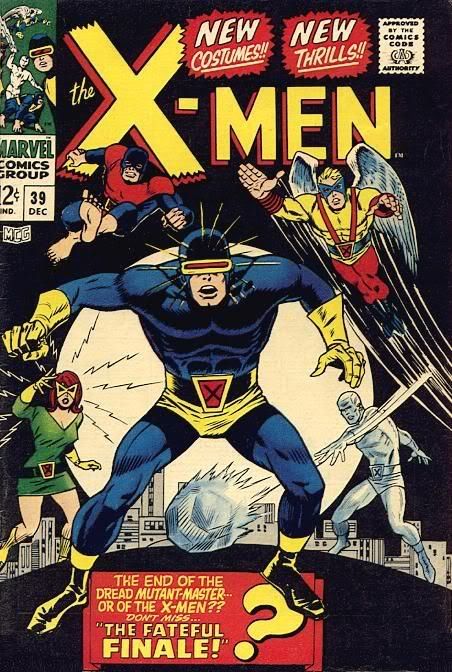
art by George Tuska
Marvel Girl eventually became The omni-powerful Phoenix and later the Dark Phoenix. In 1980's "X-Men" #137, which some consider the greatest X-Men story, Jean dons her Marvel Girl costume and identity one final time before making a self-sacrifice in order to protect the Universe from herself.
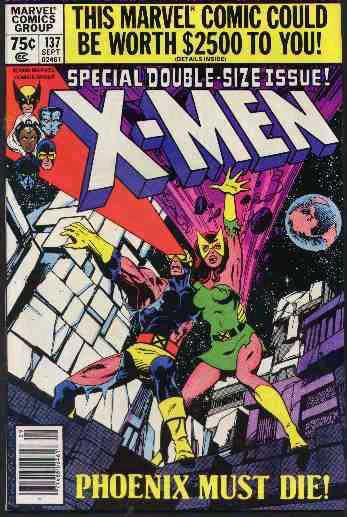
art by John Byrne
Not long after in "X-Men"s #141 and 142, the "Days of Future Past" storyline, a new character was introduced. She's a telepathic/telekinetic named Rachel who uses her mutant ability to transfer the mind of Kate Pryde into Kate's younger self in hopes of preventing a series of events that would culminate in the Earth being taken over by the robotic mutant-hunting Sentinels (note the similar-natured and identically named menaces of "The Matrix"). Changing the past in comic books, however, only results in the creation of alternate realities. Years after this initial appearance Rachel is revealed as the daughter of her dystopian reality's version of Jean Grey and Scott Summers/Cyclops.
Rachel transports herself across dimensional barriers and time. She stays for awhile with the X-Men and later serves as part of the X-Men splinter team "Excalibur" under the identity of The Phoenix.

art by Alan Davis
Also on this UK based team were the X-Men Nightcrawler and Kitty Pryde and Captain Britain and his girlfriend, a fairy-like mutant shapechanger named Meggan. Captain Britain, as mentioned before, had earlier adventures created by Davis and writer Alan Moore. The interesting interaction of the Moore Captain Britain material and its incorporation into X-Men comics is such that it demands its own presentation.

Art by Alan Davis
Davis worked on the "Excalibur" title with long time X-Men scribe Chris Claremont. The two would work together again on the "Uncanny X-Men" title, which included the return to the X-Men team of Rachel Summers, now operating under the identity of Marvel Girl.
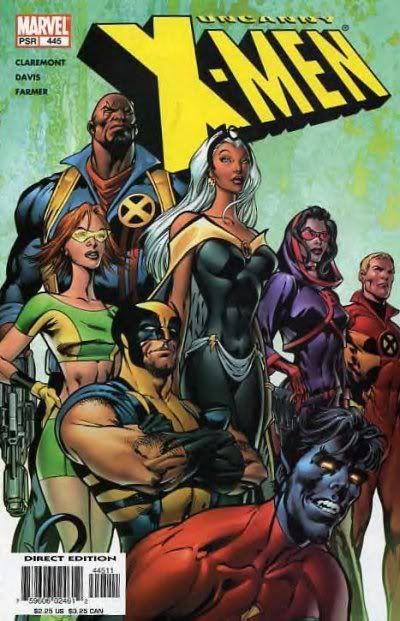
She's the red head behind Wolverine. Art by Alan Davis
The Phoenix always rises, and the path she travels is circular.